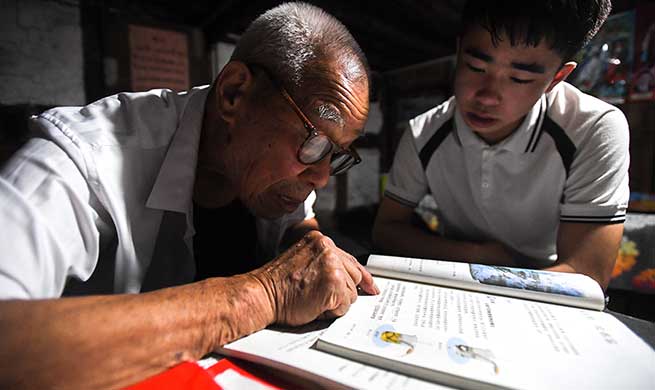PARIS, Sept. 10 (Xinhua) -- Demand for tertiary education continues to rise, but its further expansion will only be sustainable if it matches the supply of graduates with labour market and social opportunities, and gives them the skills required to navigate the future, according to the OECD report "Education at a Glance 2019" published on Tuesday.
Among 25-34-year-olds, 44 percent held a tertiary degree in 2018, compared to 35 percent in 2008, on average across OECD countries. The employment rate of tertiary-educated adults is 9 percentage points higher than that of adults with upper secondary education, and they earn 57 percent more, finds the report.
However, some sectors in high demand may struggle to find the skills they need. Less than 15 percent of new entrants to bachelor's programs study engineering, manufacturing and construction, and less than 5 percent study information and communication technologies, despite the truth that these sectors offer the highest employment rates and earnings. Women are particularly under-represented, making up fewer than a quarter of the entrants on average across OECD countries.
"It is more important than ever that young people learn the knowledge and skills needed to navigate our unpredictable and changing world," said OECD Secretary General Angel Gurria, launching the report in Paris. "We must expand opportunities and build stronger bridges with future skills needs so that every student can find their place in society and achieve their full potential."
Many institutions are evolving to meet changing job market demands by promoting flexible pathways into tertiary education, balancing academic and vocational skills, and working more closely with employers, industry and training organizations. But they must also balance larger enrolments with the need to contain costs, while maintaining the relevance and quality of their courses, says the report.
The report notes that tertiary attainment is rapidly increasing in China, which is not an OECD member country but is one of the key partners of the organization.
In China, the recent share of tertiary attainment is 18 percent, much lower than the OECD average. Among Chinese people aged between 25 and 34, 67 percent are expected to enter tertiary education for the very first time, slightly more than the OECD average of 65 percent.
In 2017, 2 percent of Chinese tertiary students studied abroad, on par with the OECD average. However, they made up 23 percent of total incoming students in OECD countries, which was the highest share among all OECD member and partner countries, says the report.
Vocational programs play an important role in China at both upper secondary and tertiary level: 42 percent of upper secondary students and 60 percent of first-time tertiary entrants were enrolled in upper secondary vocational programs and short-cycle tertiary education, respectively.
The report also assesses how youth are moving from education into work, as part of its ongoing analysis of where OECD and partner countries stand on their way to meeting the Sustainable Development Goal for education by 2030.
It finds that some countries have made significant progress in reducing the numbers of out-of-school youth in the past decade. Rates fell by 20 percentage points in the Russian Federation, 18 percentage points in Mexico, 16 percentage points in Portugal and 10 percentage points in Australia and New Zealand between 2005 and 2017.
"Education at a Glance" provides comparable national statistics measuring the state of education worldwide. The report analyzes the education systems of the OECD's 36 member countries, as well as of Argentina, Brazil, China, Colombia, Costa Rica, India, Indonesia, the Russian Federation, Saudi Arabia and South Africa.













